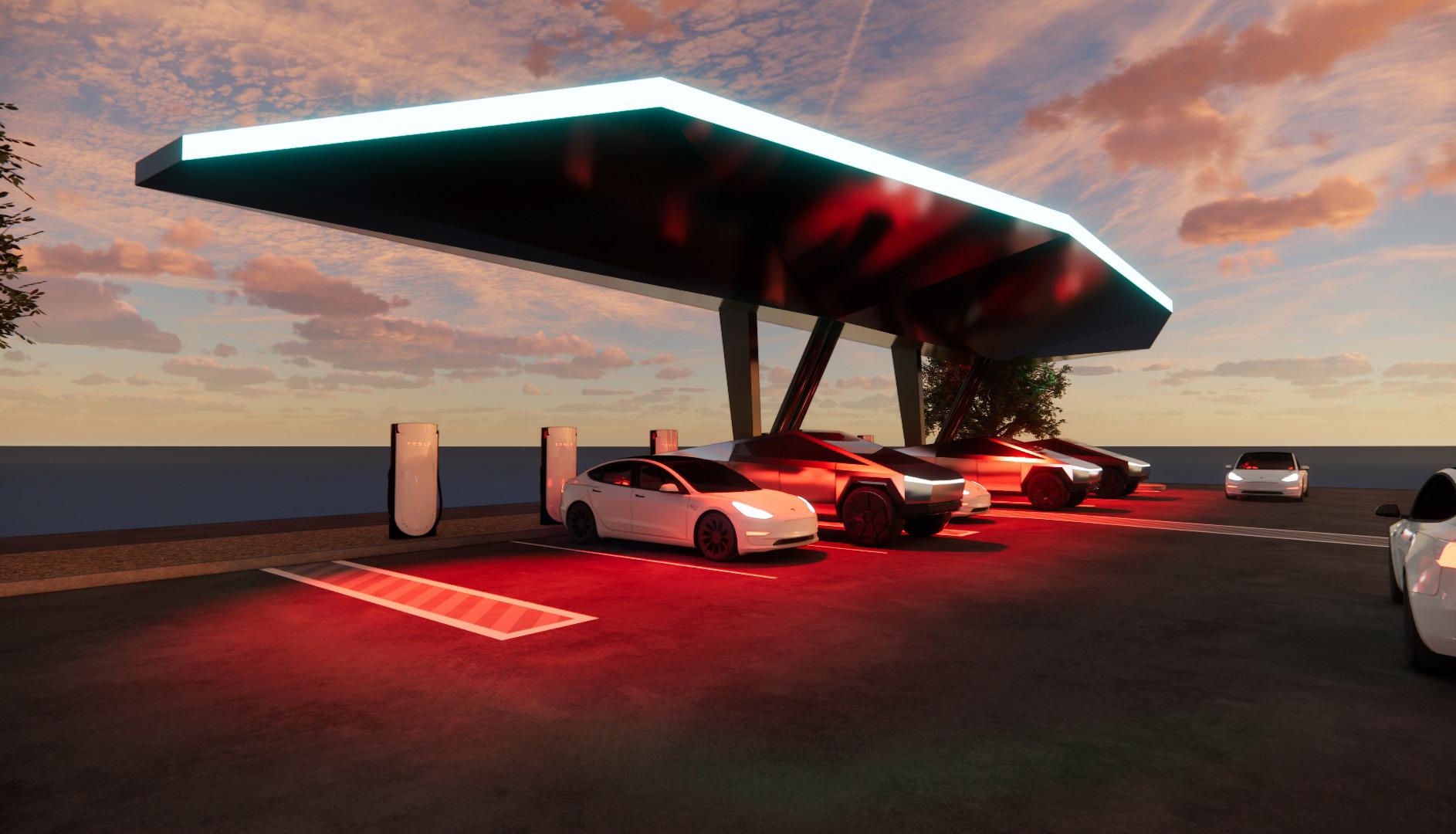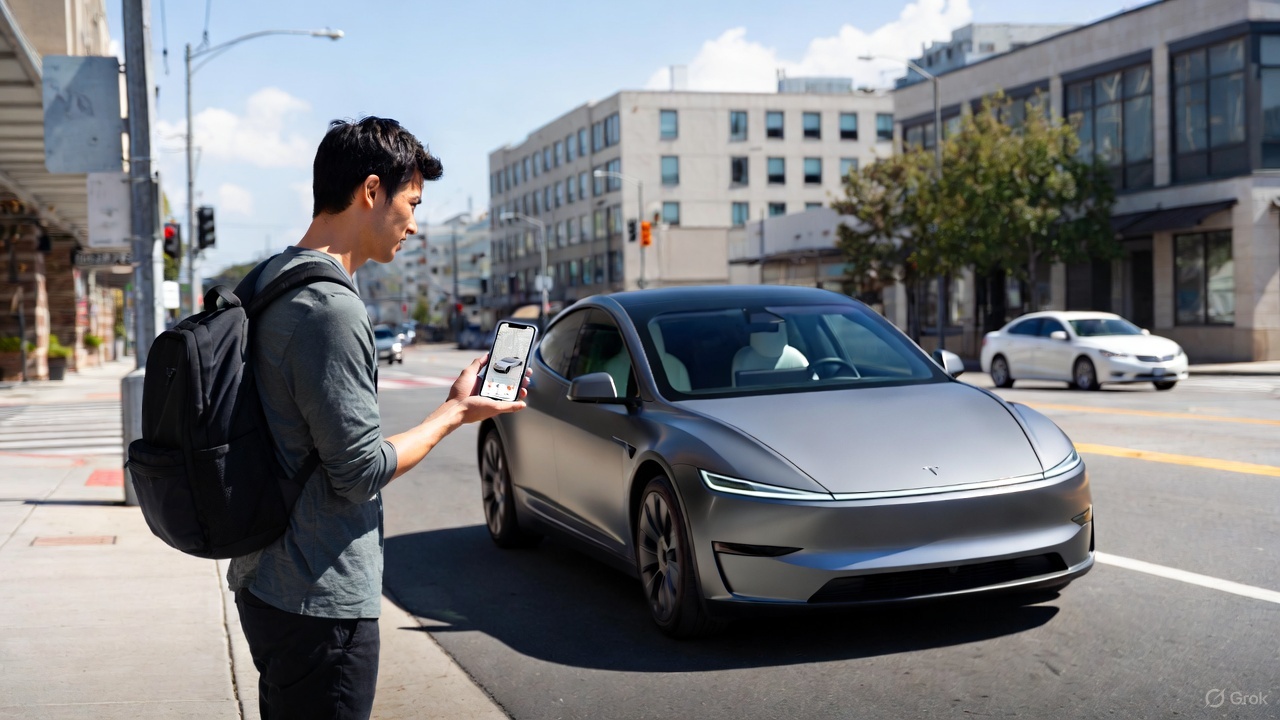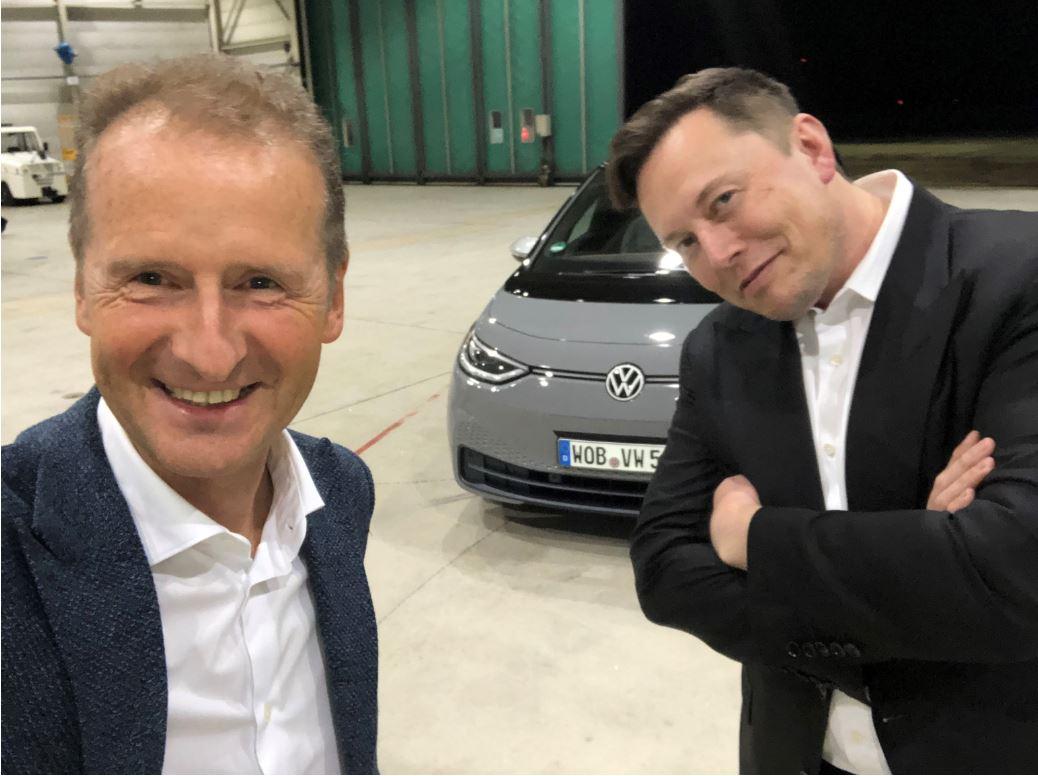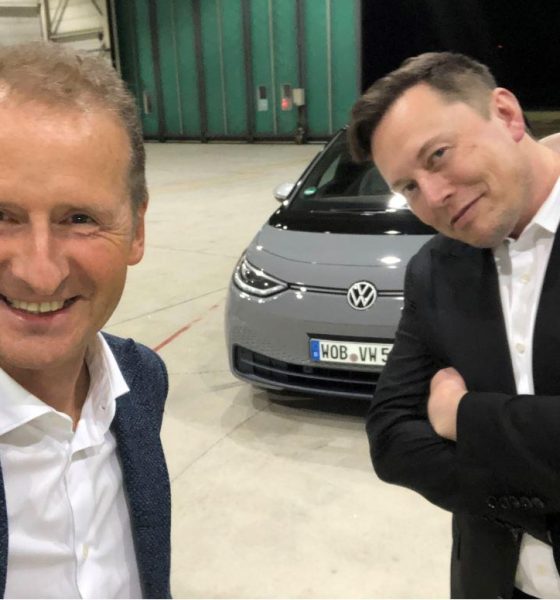Volkswagen Auto Group CEO Herbert Diess has led his German car company to be one of the most respected in terms of large entities that have chosen to leave a long and successful past of producing gas-powered vehicles in favor of electrified models. Diess has worked long and hard to dissolve VW’s past mistakes, especially the Dieselgate scandal from several years ago. However, in 2021, VW has left its blemished past behind it and is the most popular electrified brand in Europe, leading companies like Tesla, Peugeot, and Renault in the world’s most robust market for electrified vehicles. Diess is a big part of this accomplishment and has one of the more keen eyes for the industry, self-admittedly behind Elon Musk.
Diess’ thoughts on the EV industry and how 2021 has shaped it to be one of the most difficult and challenging sectors of the year due to semiconductor shortages, along with his plans for Volkswagen’s electrified future and his respect for fellow auto CEO Elon Musk were discussed in a recent interview with CNN’s Anna Stewart who caught up with the VW frontman at the International Motor Show in Munich.
50% of sales electric by 2030
Diess responds to Stewart’s first inquiry, which regards VW’s goal to have 50% of its sales be electric by 2030. “In Europe, we are already leading,” Diess said, which is true based on the most recent figures from EU-EVs.com, showing Volkswagen has a comfortable lead over second-place Tesla by just over 20,000 vehicles. In other markets, Volkswagen is performing well. “Even in the US, we have been in second place for the last months, and in China, we are growing fast. We think we will become the market leader for EVs,” Diess adds.
Volkswagen has absolutely taken on the EV initiative better than 99% of other car companies, making its goals the most believable moving forward. The ID. family of vehicles has performed incredibly well, with Volkswagen offering specific models for specific markets to keep things fresh, exciting, and relevant. The question is, will VW be able to keep up its domination of the European market when Tesla begins production at Giga Berlin later this year?
Global semiconductor shortage
One of the biggest bottlenecks in recent history, the global semiconductor supply shortage, has plagued automakers to scrap basic functions like “push-to-start” features in ICE vehicles. Diess, a usually optimistic person, admits that Volkswagen is still struggling with the shortages, and he is not quite sure when things will get better.
“It has gotten worse already. We expected that we would have relief after the summer break, which didn’t happen because, in Malaysia, we had really quite significant problems with Covid,” Diess added. “Some of our suppliers, the back ends of our suppliers are mostly based in Malaysia, and three plants were hit hard. We think that we will overcome this situation towards the end of the month, and then we should see relief.”
Autonomy
In terms of autonomy, Diess is optimistic about the capabilities of self-driving cars. “We see a much bigger transition for the industry when cars are becoming autonomous because cars will be used differently, used by more people. You can send your children or your grandparents in a car somewhere. Now imagine!” Volkswagen previously claimed it could sell a self-driving system that charged by the hour, and it would be profitable doing it. However, Diess said the business still has a long way to go, and Volkswagen will likely roll out its first fleet in 2024 or 2026. “But it’s now time to invest and to prepare. And that’s what we are doing,” he stated.
Volkswagen says it can profitably sell a self-driving system for €7 an hour
Volkswagen vs. Tesla
Diess holds high regard for Tesla CEO Elon Musk. The two are friends and have shared several compliments with each other on several occasions. Musk even took a ride in an ID.3 in Germany with Diess piloting the vehicle, which ignited rumors of a potential collaboration between the two automotive CEOs. Diess still holds the utmost respect for Musk and Tesla, calling the company’s frontman “a brilliant guy” who “makes a difference. He’s changing the world with his ventures.”
Despite the two companies combating to dominate EV sales across the globe, Diess does not see any parallels between VW and Tesla. “We are quite different. He is very focused on Tesla, on his story. I’m running a big traditional company, which we try to prepare for the future. And I think we also require different characters. I like him a lot, but I think we are quite different.”
As for whether Diess was ever offered the CEO job at Tesla, Herbert simply ended with, “I don’t know,” and a slight chuckle.”
What do you think? Let us know in the comments below, or be sure to email me at joey@teslarati.com or on Twitter @KlenderJoey.

News
Tesla gamifies Supercharging with new ‘Charging Passport’
It will also include things like badges for special charging spots, among other metrics that will show all of the different places people have traveled to plug in for range.

Tesla is gamifying its Supercharging experience by offering a new “Charging Passport,” hoping to add a new layer to the ownership experience.
While it is not part of the Holiday Update, it is rolling out around the same time and offers a handful of cool new features.
Tesla’s Charging Passport will be available within the smartphone app and will give a yearly summary of your charging experience, helping encapsulate your travel for that year.
It will also include things like badges for special charging spots, among other metrics that will show all of the different places people have traveled to plug in for range.
Tesla has just introduced “Charging Passport,” a new yearly summary of your charging.
• Charging badges: Iconic Charging badge (for visiting places like the Tesla Diner, Oasis Supercharger, etc), Explorer badge, green saver badge, etc.
• Total unique Superchargers visited
•… pic.twitter.com/c1DHTWXpj7— Sawyer Merritt (@SawyerMerritt) December 8, 2025
Tesla will include the following metrics within the new Charging Passport option within the Tesla app:
- Charging badges: Iconic charging badges for visiting places like the Tesla Diner, Oasis Supercharger, etc., Explorer Badge, and more
- Total Unique Superchargers Visited
- Total Charging Sessions
- Total Miles Added during Charging Sessions
- Top Charging Day
- Longest Trip
- Favorite Charging Locations
This will give people a unique way to see their travels throughout the year, and although it is not necessarily something that is needed or adds any genuine value, it is something that many owners will like to look back on. After all, things like Spotify Wrapped and Apple Music Replay have been a great way for people to see what music they listened to throughout the year.
This is essentially Tesla’s version of that.
With a handful of unique Superchargers already active, Tesla is also building some new ones, like a UFO-inspired location in New Mexico, near Roswell.
Tesla is building a new UFO-inspired Supercharger in the heart of Alien country
News
Tesla launches its coolest gift idea ever just a few weeks after it was announced
“Gift one month of Full Self-Driving (Supervised), which allows the vehicle to drive itself almost anywhere with minimal intervention.”

Tesla has launched its coolest gift idea ever, just a few weeks after it was announced.
Tesla is now giving owners the opportunity to gift Full Self-Driving for one month to friends or family through a new gifting program that was suggested to the company last month.
The program will enable people to send a fellow Tesla owner one month of the company’s semi-autonomous driving software, helping them to experience the Full Self-Driving suite and potentially help Tesla gain them as a subscriber of the program, or even an outright purchase.
Tesla is going to allow owners to purchase an FSD Subscription for another owner for different month options
You’ll be able to gift FSD to someone! https://t.co/V29dhf5URj
— TESLARATI (@Teslarati) November 3, 2025
Tesla has officially launched the program on its Shop. Sending one month of Full Self-Driving costs $112:
“Gift one month of Full Self-Driving (Supervised), which allows the vehicle to drive itself almost anywhere with minimal intervention. All sales are final. Can only be purchased and redeemed in the U.S. This gift card is valued at $112.00 and is intended to cover the price of one month of FSD (Supervised), including up to 13% sales tax. It is not guaranteed to cover the full monthly price if pricing or tax rates change. This gift card can be stored in Tesla Wallet and redeemed toward FSD (Supervised) or any other Tesla product or service that accepts gift card payments.”
Tesla has done a great job of expanding Full Self-Driving access over the past few years, especially by offering things like the Subscription program, free trials through referrals, and now this gift card program.
Gifting Full Self-Driving is another iteration of Tesla’s “butts in seats” strategy, which is its belief that it can flip consumers to its vehicles and products by simply letting people experience them.
There is also a reason behind pushing Full Self-Driving so hard, and it has to do with CEO Elon Musk’s compensation package. One tranche requires Musk to achieve a certain number of active paid Full Self-Driving subscriptions.
More people who try the suite are likely to pay for it over the long term.
News
Tesla expands Robotaxi app access once again, this time on a global scale
Tesla said recently it plans to launch Robotaxi in Miami, Houston, Las Vegas, Phoenix, and Dallas.

Tesla has expanded Robotaxi app access once again, but this time, it’s on a much broader scale as the company is offering the opportunity for those outside of North America to download the app.
Tesla Robotaxi is the company’s early-stage ride-hailing platform that is active in Texas, California, and Arizona, with more expansion within the United States planned for the near future.
Tesla said recently it plans to launch Robotaxi in Miami, Houston, Las Vegas, Phoenix, and Dallas.
The platform has massive potential, and Tesla is leaning on it to be a major contributor to even more disruption in the passenger transportation industry. So far, it has driven over 550,000 miles in total, with the vast majority of this coming from the Bay Area and Austin.
First Look at Tesla’s Robotaxi App: features, design, and more
However, Tesla is focusing primarily on rapid expansion, but most of this is reliant on the company’s ability to gain regulatory permission to operate the platform in various regions. The expansion plans go well outside of the U.S., as the company expanded the ability to download the app to more regions this past weekend.
So far, these are the areas it is available to download in:
- Japan
- Thailand
- Hong Kong
- South Korea
- Australia
- Taiwan
- Macau
- New Zealand
- Mexico
- U.S.
- Canada
Right now, while Tesla is focusing primarily on expansion, it is also working on other goals that have to do with making it more widely available to customers who want to grab a ride from a driverless vehicle.
One of the biggest goals it has is to eliminate safety monitors from its vehicles, which it currently utilizes in Austin in the passenger’s seat and in the driver’s seat in the Bay Area.
A few weeks ago, Tesla started implementing a new in-cabin data-sharing system, which will help support teams assist riders without anyone in the front of the car.
Tesla takes a step towards removal of Robotaxi service’s safety drivers
As Robotaxi expands into more regions, Tesla stands to gain tremendously through the deployment of the Full Self-Driving suite for personal cars, as well as driverless Robotaxis for those who are just hailing rides.
Things have gone well for Tesla in the early stages of the Robotaxi program, but expansion will truly be the test of how things operate going forward. Navigating local traffic laws and gaining approval from a regulatory standpoint will be the biggest hurdle to jump.










